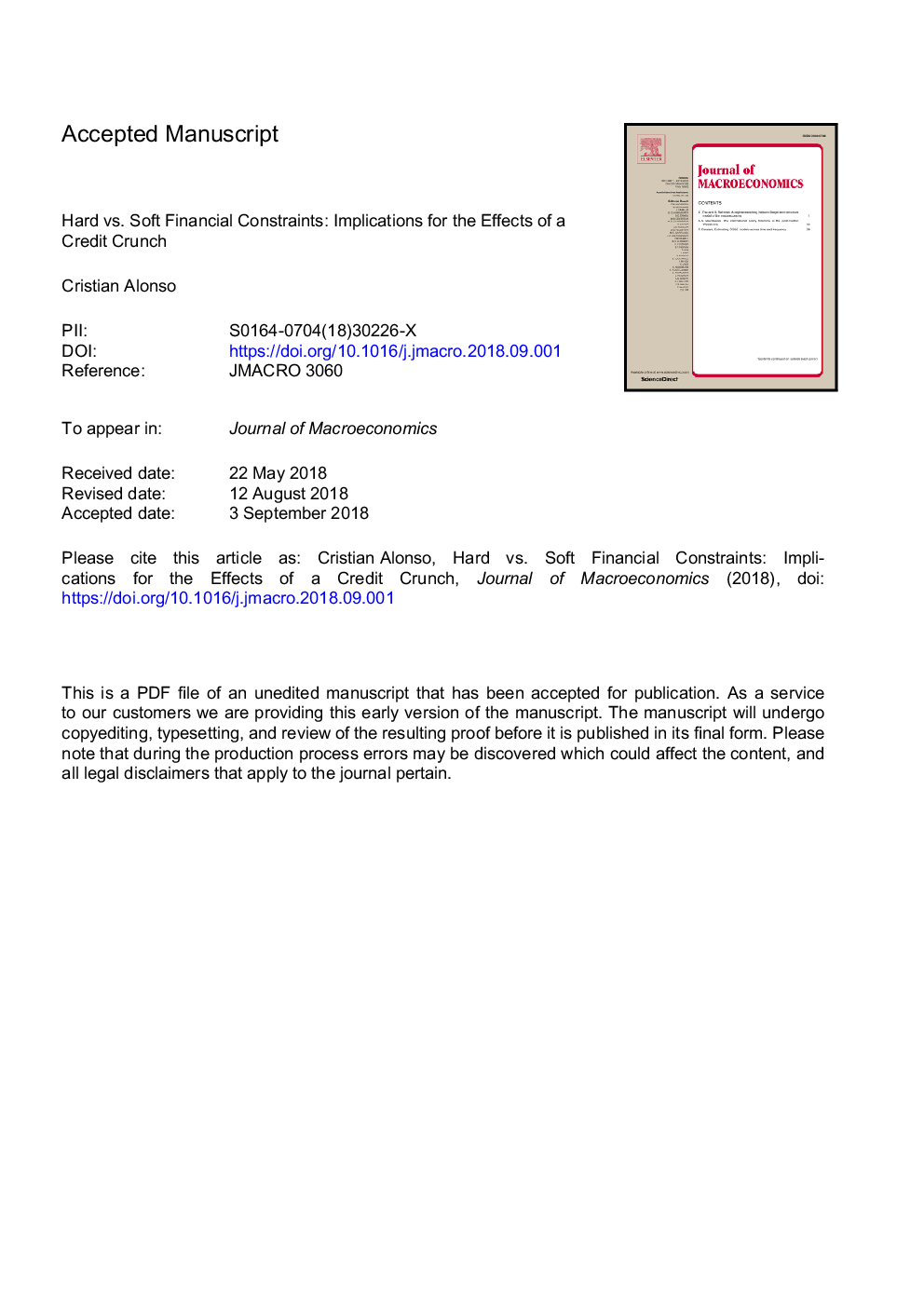| Article ID | Journal | Published Year | Pages | File Type |
|---|---|---|---|---|
| 11031332 | Journal of Macroeconomics | 2018 | 40 Pages |
Abstract
In the aftermath of the Great Recession, understanding how households' consumption responds to a credit crunch has been a central goal of macroeconomics. Most of the recent research has explored this question using a “hard constraint” modeling device, where households can borrow at the risk-free rate only up to an exogenous amount. An alternative, and more realistic, way to model financial frictions is to allow households to borrow as much as they want but at an interest rate that depends on the level of debt. I refer to the latter as the “soft constraint” model. In a Standard Incomplete Markets framework with heterogeneous agents, I calibrate two economies differing only in the type of financial constraint that households face and I show that a credit crunch in the hard constraint economy (i.e. decrease in the exogenous borrowing limit) produces a drop in consumption significantly more severe than an equivalent crunch in the soft constraint version (i.e. increase in the borrowing interest rate). I conclude that the quantitative consequences of a credit crunch largely depend on the modeling approach.
Related Topics
Social Sciences and Humanities
Economics, Econometrics and Finance
Economics and Econometrics
Authors
Cristian Alonso,
